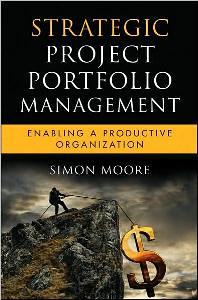In reading Macolm Gladwell’s compelling recent book What The Dog Saw and Other Adventures, there is an interesting chapter titled “Blowup”, which covers various topics including the provocative research of Gerald Wilde, a Psychology Professor at Queen’s University in Canada. Professor Wilde, in his book, available free online, Target Risk puts forward a counter-intuitive theory of how people adapt to risk, and it has implications for project portfolio management.
Most people believe that devices engineered to reduce the risk of being injured in a traffic accident, serve to make people safer – bicycle helmets, anti-lock brakes and seatbelts. For example, conventional wisdom assumes that if you have anti-lock brakes on your car, you are able to break more effectively and so the chance of you having an accident falls. However, Professor Wilde draws on a number of empirical studies to contradict this, here are some of them. They are biased towards traffic safety because that is Professor Wilde’s specialism:
| Innovation |
Impact |
Research source |
| Anti-lock breaks (ABS) |
Likelihood of accidents unchanged with ABS |
Aschenbrenner, M. and Biehl, B. (1994). |
| 1966 US legislation for safer passenger vehicles |
No decrease in accidents per KM driven |
Peltzman, S. (1975) |
| Increase road lane width 30cm |
Average speed increases 3.2km/h |
OECD (1990) |
What this implies is that people adjust their behavior depending on the level of risk they face. If roads are wider, then people will drive faster. If a car has anti-lock brakes, then a driver is more likely to tailgate and brake more abruptly. If cars can better protect drivers in the event of an accident, people will drive faster. Professor Wilder, argues for risk homeostatis, meaning that people will assume the same level of risk that they desire independent of changes in technology such as safety improvements. Therefore, changes in behavior can entirely offset safety improvements. It is the level of risk that people want to assume that matters, improvements in technology will not necessarily change people’s risk preference.
In terms of project portfolio management, the implication is that systems in place to reduce risk may be offset by participants engaging in offsetting riskier behavior, so that their total risk remains unchanged, this can occur despite the best efforts of risk management strategies
Does this, admittedly rather extreme perspective mean that risk management is ineffective? The answer is no, for two reasons. Firstly, as Gladwell notes, even in these examples there is a benefit to the tools in place – people are able to drive faster and get to their destination quicker because of the technologies introduced. Their chance of being in an accident might be unchanged, but they are able to travel faster for the same level of safety.
Secondly, and perhaps more importantly, there is another implication deeper in the study concerning anti-lock breaks, even though during the 3 years of observation, drivers with anti-lock breaks took compensating risk and neutralized the safety benefit, in year 4, all the drivers (who were taxi drivers) were told that they would bear part of the cost of accidents and be terminated if they had a bad safety record. Even though technology did not improve safety, changing the incentives the drivers faced resulted in materially less accidents. When they knew they would bear more of the cost of accidents, the drivers took less risk.
The implication is that if you put in place risk management tools that compensate for peoples mistakes, they may ‘take advantage’ of them by taking more risk, offsetting the risk management benefit. However, the incentives you put in place to reward and punish people for taking risk will have an impact.

